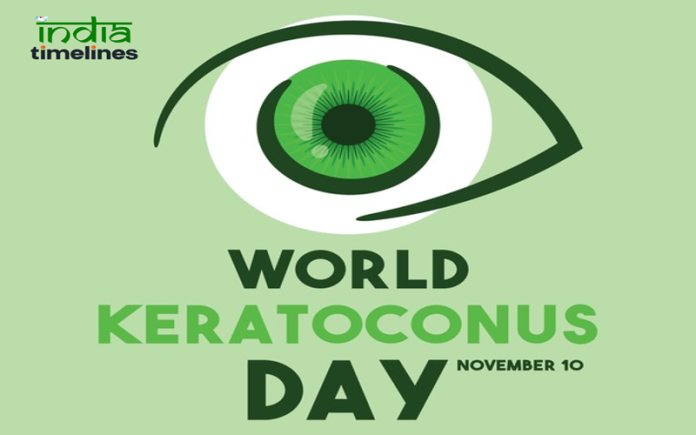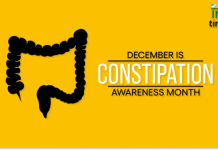
Every year, on November 10th, the world observes World Keratoconus Day. This important day is dedicated to raising awareness about keratoconus, a progressive eye condition that affects the shape and clarity of the cornea, leading to vision impairment. With the prevalence of keratoconus increasing globally, understanding this condition and the available treatments is crucial for both individuals at risk and the general public.
In 2024, World Keratoconus Day aims to spread knowledge about early detection, the importance of regular eye checkups, and advancements in treatments. By highlighting patient stories, the latest research, and resources for those living with keratoconus, this awareness day hopes to bring attention to the challenges faced by millions worldwide.
What is Keratoconus?
Keratoconus is a degenerative eye disorder where the cornea—normally dome-shaped—begins to thin and bulge into a cone-like shape. This irregular shape causes light entering the eye to be distorted, leading to blurred or distorted vision.
Keratoconus typically begins during adolescence or in the early twenties and progresses over time. In many cases, the condition stabilizes by the age of 40, but without proper treatment, it can cause significant visual impairment and even lead to corneal scarring. The condition affects both eyes, but one eye may be more severely impacted than the other.
The exact cause of keratoconus is still not fully understood, but it is believed to be a combination of genetic, environmental, and biochemical factors.
Symptoms of Keratoconus
The symptoms of keratoconus can vary from person to person and may change as the condition progresses. Early signs are often mistaken for common vision issues, such as nearsightedness or astigmatism, making early detection challenging. Key symptoms of keratoconus include:
- Blurred or distorted vision: Objects may appear stretched or warped, and fine details become difficult to see.
- Increased sensitivity to light and glare: Bright lights may cause discomfort, especially at night or in dimly lit environments.
- Frequent changes in prescription: People with keratoconus may need to update their eyeglasses or contact lenses frequently as their vision changes rapidly.
- Ghosting or multiple images: Some individuals experience double vision or ghosting, where they see multiple images of the same object.
- Difficulty with night vision: Driving or reading at night may become more challenging due to poor contrast and light distortion.
If any of these symptoms are noticed, especially in young adults, it is vital to consult an eye care professional for a comprehensive eye exam.
Diagnosis and Early Detection
Early diagnosis of keratoconus is key to preventing severe vision loss. Eye care professionals use a variety of tools and tests to diagnose keratoconus, including:
- Corneal Topography: This test creates a detailed 3D map of the cornea’s surface, revealing any irregularities in its shape. It is one of the most reliable methods for detecting keratoconus in its early stages.
- Pachymetry: This measures the thickness of the cornea, which helps identify thinning associated with keratoconus.
- Slit-lamp Examination: A special microscope with a bright light is used to examine the cornea and detect any signs of keratoconus, such as thinning or scarring.
Regular eye exams, especially for people with a family history of keratoconus or who are at higher risk, are crucial for early detection and management.
Risk Factors for Keratoconus
While the exact cause of keratoconus is unknown, several risk factors are believed to increase the likelihood of developing the condition. These include:
- Genetics: A family history of keratoconus significantly raises the risk. Studies suggest that the condition may be hereditary, with several genes potentially involved.
- Eye Rubbing: Excessive and vigorous rubbing of the eyes has been linked to the progression of keratoconus. People with allergies or chronic eye irritation are more prone to rubbing their eyes, putting them at greater risk.
- Allergies and Asthma: Individuals with conditions like asthma, hay fever, or eczema may have a higher risk of developing keratoconus due to the associated eye irritation and inflammation.
- Underlying Medical Conditions: Some medical conditions, such as Down syndrome, Ehlers-Danlos syndrome, and Marfan syndrome, have been associated with a higher incidence of keratoconus.
- Environmental Factors: Exposure to ultraviolet rays and environmental pollutants may also contribute to the development or worsening of keratoconus.
Impact on Daily Life
Living with keratoconus can have a profound impact on daily life, particularly if the condition progresses without treatment. As vision becomes more distorted and blurred, simple activities like reading, driving, and using digital devices can become increasingly difficult. Many patients report feelings of frustration, anxiety, and depression due to the challenges posed by the condition.
Moreover, keratoconus can affect a person’s ability to work, especially in professions that require precise vision. This is why early diagnosis, appropriate treatment, and proper management are essential for maintaining quality of life.
Treatment Options for Keratoconus
While keratoconus cannot be cured, various treatment options are available to manage the condition and improve vision. The choice of treatment depends on the severity of the condition and how much it has progressed.
- Eyeglasses and Soft Contact Lenses: In the early stages of keratoconus, eyeglasses or soft contact lenses may be enough to correct vision. However, as the condition progresses, these may no longer provide adequate correction.
- Specialty Contact Lenses: Rigid gas-permeable (RGP) lenses, scleral lenses, and hybrid lenses are designed specifically for individuals with keratoconus. These lenses provide a smooth, regular surface over the cornea, allowing for clearer vision.
- Corneal Cross-Linking (CXL): Corneal cross-linking is a minimally invasive procedure that strengthens the cornea by increasing collagen bonds. This treatment can help halt the progression of keratoconus, reducing the need for more invasive treatments later on. It is most effective when performed in the early stages of the condition.
- Intacs: Intacs are small, semi-circular rings implanted in the cornea to flatten its shape and improve vision. This procedure is used for moderate cases of keratoconus when contact lenses are no longer effective.
- Corneal Transplant: In severe cases where the cornea becomes too thin or scarred, a corneal transplant (keratoplasty) may be necessary. This involves replacing the damaged cornea with a donor cornea. While this procedure can restore vision, it is typically considered a last resort after other treatments have failed.
Advancements in Keratoconus Treatment
As research continues, new advancements in the treatment of keratoconus are emerging. One of the most promising areas of research is the development of customized contact lenses and advanced laser treatments. These technologies offer more personalized solutions, improving the comfort and visual outcomes for patients with keratoconus.
Additionally, gene therapy is being explored as a potential future treatment for keratoconus. By targeting the underlying genetic causes, researchers hope to develop therapies that can prevent or even reverse the progression of the disease.
Raising Awareness on World Keratoconus Day 2024
World Keratoconus Day 2024 aims to shine a spotlight on the importance of early diagnosis, access to treatment, and support for individuals living with the condition. Advocacy groups, eye care professionals, and keratoconus patients are coming together to organize events, share information, and promote eye health.
Social media campaigns, webinars, and educational materials will play a vital role in spreading awareness. People are encouraged to use the hashtag #WorldKeratoconusDay2024 to share their experiences, educate others, and promote eye health checkups.
For those living with keratoconus, support groups and online communities offer a platform to connect with others, share coping strategies, and stay updated on the latest treatment options. The Keratoconus Foundation and other advocacy organizations provide valuable resources for patients and their families, including guidance on managing the condition and finding specialized care.
India Time Lines
Conclusion
World Keratoconus Day 2024 provides an opportunity to raise awareness about a condition that affects millions worldwide. By improving understanding of keratoconus, encouraging early diagnosis, and promoting access to treatment, we can help individuals with this condition lead better lives.
Whether you are at risk, have been diagnosed, or know someone living with keratoconus, this day reminds us of the importance of eye health. Together, we can work towards a future where vision loss from keratoconus is minimized, and those affected receive the care and support they need.



































